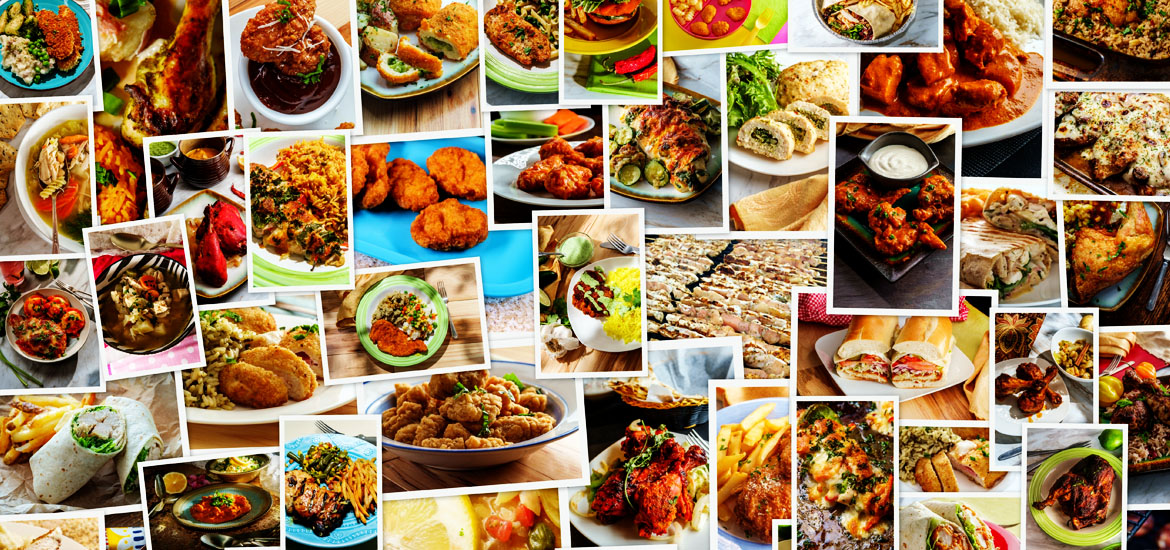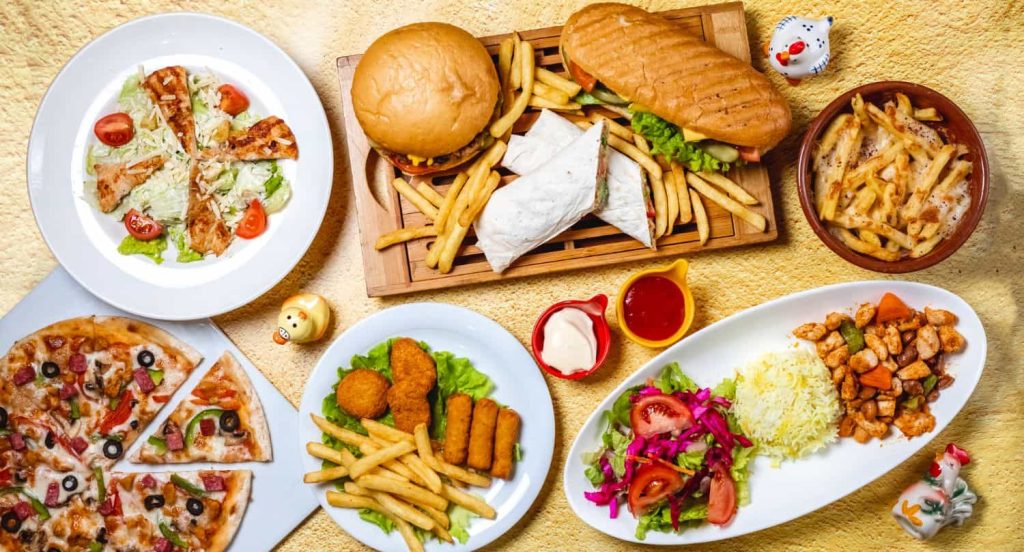Food is an essential part of every culture, and many iconic dishes have fascinating backstories that reflect the history, geography, and evolution of the world’s cuisines. From humble beginnings to international fame, these foods have played important roles in shaping culinary traditions and continue to bring people together across the globe. In this article, we’ll explore 10 iconic foods and uncover the stories behind their creation, transformation, and worldwide popularity.
1. Pizza: From Ancient Flatbreads to Global Icon
Pizza, now a worldwide favorite, has humble origins that can be traced back to ancient civilizations. While flatbreads with various toppings were eaten by ancient Egyptians, Greeks, and Romans, the modern pizza as we know it was born in Naples, Italy, in the 18th century. Legend has it that pizza gained popularity when Queen Margherita of Savoy tasted a pizza topped with tomatoes, mozzarella, and basil, colors representing the Italian flag. Today, pizza is enjoyed in countless variations and has become one of the most iconic foods in the world.
- Fun Fact: The world’s largest pizza, made in 2012 in Rome, was over 1261 square meters and was named “Ottavia” in homage to ancient Rome.

2. Sushi: A Journey from Preservation to Art
Sushi is often associated with Japanese cuisine, but its origins are far from simple. The earliest form of sushi, called “narezushi,” began as a method for preserving fish in fermented rice. It wasn’t until the Edo period (1603-1868) that the sushi we recognize today—fresh fish atop vinegared rice—was developed. The practice of sushi making spread throughout Japan and eventually the world, where it became an art form. Sushi bars and restaurants now serve a wide variety of rolls, sashimi, and nigiri.
- Fun Fact: Sushi’s popularity outside Japan grew after World War II, thanks to returning American soldiers stationed in Japan who brought back an appreciation for Japanese food.
3. Hamburger: A Symbol of American Fast Food Culture
The hamburger is arguably one of the most recognizable foods worldwide, often associated with American fast food culture. While its exact origin is debated, the hamburger likely emerged in the late 19th century in the United States, inspired by the “Hamburg steak” brought over by German immigrants. As hamburgers evolved into fast food staples, they gained widespread popularity in the 20th century with the rise of chains like McDonald’s. Today, hamburgers have evolved into an endless variety of gourmet and fast food options, making them an enduring part of global cuisine.
- Fun Fact: The first recorded hamburger was served at the 1904 St. Louis World’s Fair, and it quickly became a popular street food.
4. Tacos: A Staple of Mexican Street Food
Tacos are a beloved Mexican dish with origins dating back to ancient times. Indigenous people in Mexico, such as the Aztecs, used corn tortillas to wrap fillings like beans, fish, or insects, creating a simple yet effective meal. The taco, as we know it today—with fillings like carne asada, carnitas, or fish—evolved during the 18th and 19th centuries. Tacos have become popular around the world, often served at fast-food restaurants or as gourmet creations with an array of unique ingredients.
- Fun Fact: The taco became internationally recognized through its spread to the United States, where Mexican immigrants introduced it in the early 20th century.
5. Croissant: A Symbol of French Pastry Perfection
The croissant is one of France’s most iconic pastries, but its origins are actually tied to Austria. The croissant’s ancestor, the kipferl, has been baked since at least the 13th century. It is said that the crescent-shaped pastry was inspired by the Ottoman flag during the Siege of Vienna in 1683. Austrian baker August Zang introduced the kipferl to Paris in the 19th century, where it was adapted into the buttery, flaky croissant we know today. Over time, it became a staple of French bakeries and breakfast tables worldwide.
- Fun Fact: The croissant’s crescent shape is said to symbolize the defeat of the Ottoman Empire during the siege.
6. Dim Sum: A Culinary Tradition of Cantonese Origin
Dim sum refers to a variety of bite-sized dishes traditionally served with tea in Cantonese cuisine. The history of dim sum goes back to the Silk Road, where traders and travelers would stop at teahouses for small snacks. Over centuries, the tradition evolved into a formalized meal enjoyed on weekends or special occasions. Today, dim sum features an array of dumplings, buns, rolls, and more, and is beloved around the world. Dim sum has become especially popular in major cities worldwide, often served in specialized restaurants.
- Fun Fact: Dim sum is commonly eaten in a social setting, with a tradition known as “yum cha,” where people enjoy tea and small plates with family and friends.

7. Pasta: From Ancient Grains to Italian Icon
Pasta is often considered the hallmark of Italian cuisine, but its history dates back much further. The first forms of pasta can be traced to ancient China, where noodles were made from wheat and rice flour. It wasn’t until the Arab expansion in the 9th century that pasta made its way to Italy, where it evolved into the different varieties we know today. In Italy, pasta became an essential part of the diet, with each region boasting its own unique pasta shapes and sauces. Today, pasta is a global comfort food and is enjoyed in countless forms, from spaghetti to ravioli.
- Fun Fact: Pasta is so ingrained in Italian culture that there are over 600 different shapes, each designed to pair with specific sauces.
8. Chocolate: A Sweet Treat with Ancient Roots
Chocolate has a long and rich history, stretching back to the ancient civilizations of Mesoamerica. The Mayans and Aztecs revered cacao beans, using them to make a bitter drink. When European explorers encountered chocolate in the 16th century, they brought it back to Europe, where sugar was added to create the sweet treat we know today. Over the centuries, chocolate has evolved into a beloved ingredient in candies, cakes, drinks, and more. The rise of chocolate bars in the 19th century marked the beginning of chocolate’s global popularity.
- Fun Fact: In the 1800s, the invention of the chocolate bar by Joseph Fry revolutionized the way chocolate was consumed.
9. Paella: Spain’s Flavorful Feast from Valencia
Paella is one of Spain’s most iconic dishes, originating from the Valencia region on the east coast of Spain. This flavorful rice dish traditionally includes saffron, seafood, chicken, rabbit, and vegetables. Paella was originally a humble meal cooked by farmers and fishermen, made with whatever ingredients were readily available. Over time, it became a symbol of Spanish culture, often enjoyed during family gatherings and celebrations. Paella has evolved into numerous regional variations, with some including beans, chorizo, or other meats.
- Fun Fact: Authentic paella is cooked over an open flame in a wide, shallow pan, giving it its distinctive flavor and texture.
10. Curry: A Spice Journey Across Continents
Curry is a dish that spans multiple cultures and regions, but its origins can be traced to ancient India. The term “curry” was popularized by British colonists in the 18th century, though Indian cuisine has a long history of using a complex blend of spices in stews, meats, and vegetables. Over time, curry spread to other parts of Asia, such as Thailand and Japan, and eventually to the UK and beyond. Today, curry is enjoyed in a wide range of forms—from Indian masala curries to Thai green curries and Japanese katsu curry.
- Fun Fact: The word “curry” actually refers to a wide variety of spiced dishes, but it was coined by British colonists who used it to describe a dish with a combination of spices.
Conclusion
These 10 iconic foods represent just a small fraction of the world’s rich culinary history. From pizza’s transformation into an international favorite to the timeless appeal of sushi and the versatility of curry, each dish tells a unique story. Understanding the origins and history behind the foods we love not only enhances our appreciation of them but also connects us to the diverse cultures and traditions that have shaped our global food landscape. So the next time you enjoy one of these iconic dishes, you’ll know just a little bit more about the fascinating history that brought them to your plate.


